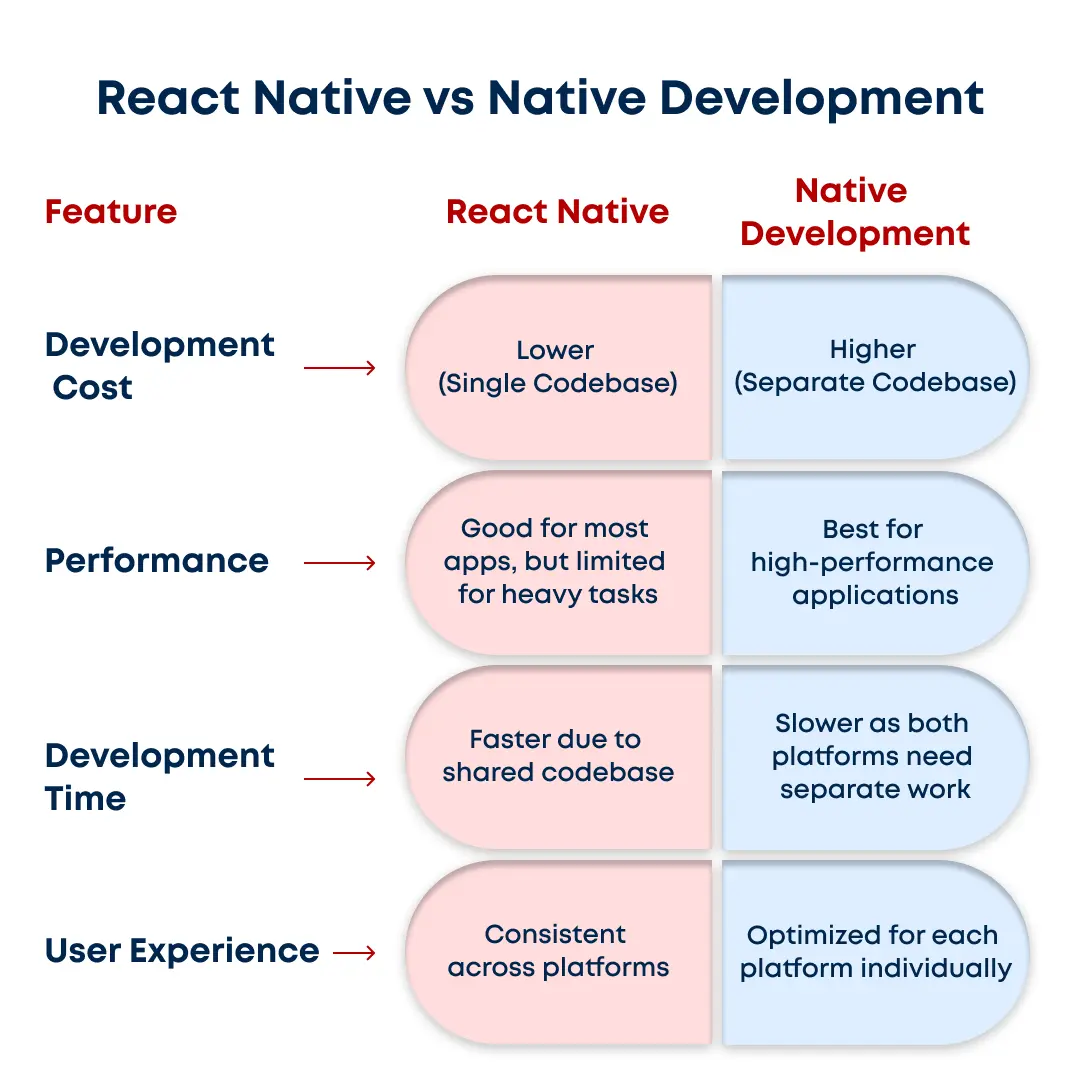In Mexico, the demand for mobile applications is rapidly growing, with businesses looking to establish a strong digital presence. One of the most common dilemmas companies face when developing an app is choosing between React Native and Native development. Both options have their pros and cons, and the right choice depends on factors like cost, performance, and development speed. Let’s dive deep into the differences to help you make an informed decision.
What is React Native?
React Native is a cross-platform mobile development framework created by Facebook. It allows developers to write a single codebase in JavaScript and deploy it on both iOS and Android devices. This means faster development and reduced costs, making it an attractive choice for businesses aiming for efficiency.
Pros of React Native
Cost-Effective – Since it’s cross-platform, you save money by developing once instead of separately for iOS and Android.
Faster Development – Shared codebase means quicker updates and releases.
Large Developer Community – A huge ecosystem of pre-built components and active support.
Hot Reloading – Developers can see changes instantly, making debugging and iteration easier.
Good Performance for Most Apps – Suitable for many business applications that don’t require extreme computational power.
Cons of React Native
Performance Limitations – Native apps usually perform better in complex tasks like gaming and real-time processing.
Limited Access to Native Features – While React Native provides APIs for many device functionalities, deep hardware integrations may still require native modules.
App Size – Apps built with React Native can be larger compared to native ones.
What is Native Development?
Native development means building apps specifically for either iOS (using Swift or Objective-C) or Android (using Kotlin or Java). These apps are optimized for each platform, delivering the highest performance and best user experience.
Pros of Native Development
High Performance – Ideal for apps with heavy graphics, animations, and real-time features.
Better User Experience – Follows platform-specific UI/UX guidelines, providing a seamless experience.
Full Access to Device Capabilities – Deeper integration with camera, GPS, and other hardware.
More Security – Greater protection against cyber threats and hacking attempts.
Cons of Native Development
Higher Cost – Requires separate development for iOS and Android, increasing costs.
Longer Development Time – Since both platforms need to be developed separately, time to market is longer.
More Maintenance Effort – Updates and bug fixes need to be done independently for each platform.
Comparison Table: React Native vs Native


Which One is Right for Your Business in Mexico?
Your choice depends on the type of app you want to build. Here’s a quick guide to help you decide:
- If you need a fast and cost-effective solution for a business app, React Native is a great choice.
- If your app requires high performance, deep hardware integration, or security, Native development is the way to go.
- If you’re a startup or small business in Mexico looking to launch quickly, React Native can save both time and money.
- If you’re developing a complex financial, healthcare, or gaming app, investing in Native development will ensure long-term success.
Autotroph Infotech specializes in delivering high-quality mobile apps tailored to your needs. Whether you choose React Native or Native development, our team ensures top-notch performance and a seamless user experience. Contact us today and take your business to the next level!


